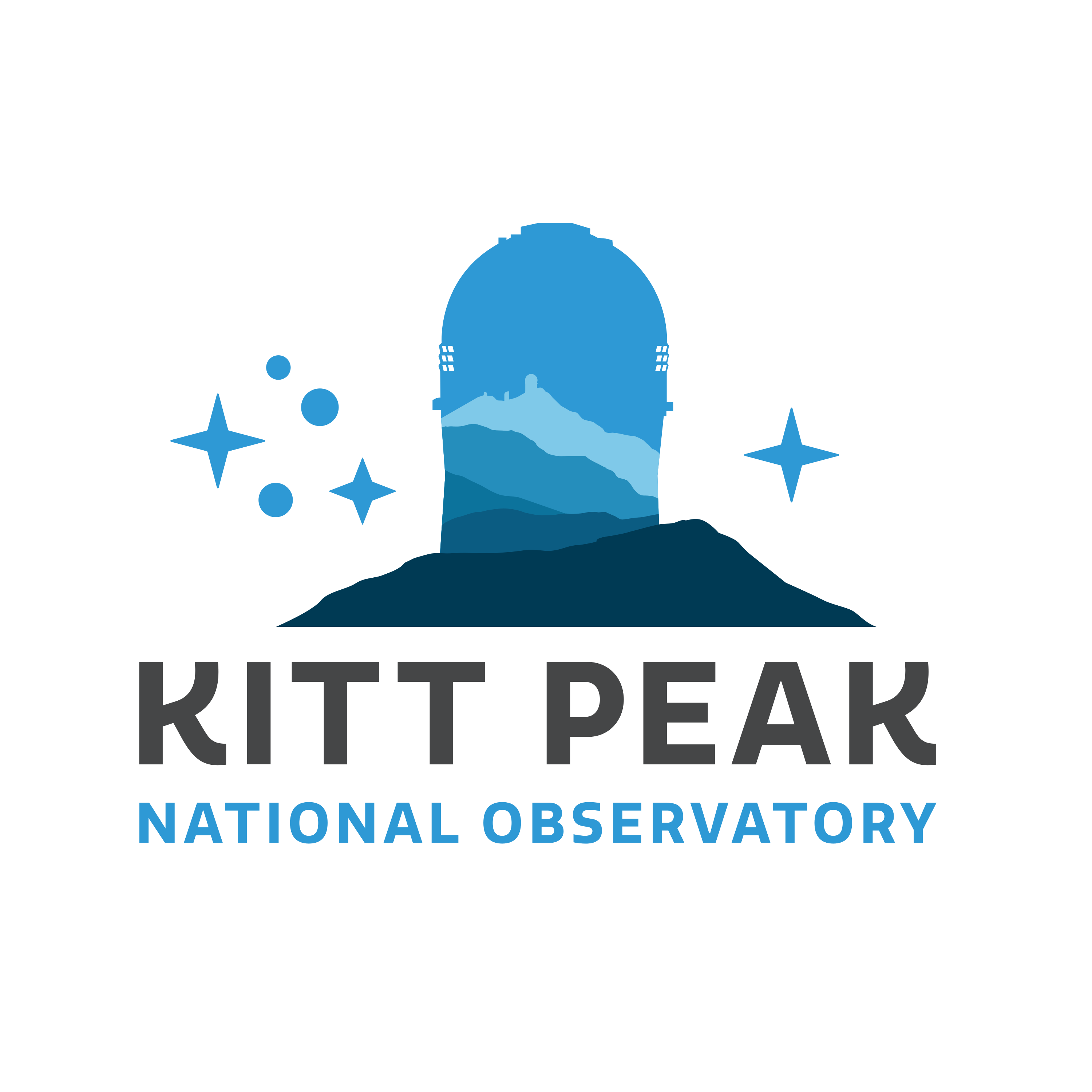Kitt Peak Telescopes Explore the Universe Again
NOIRLab’s Kitt Peak National Observatory back on the sky following Contreras Fire shutdown
7 October 2022
Though much work still needs to be done, many of the telescopes and key scientific instruments located at Kitt Peak National Observatory (KPNO), a Program of NSF NOIRLab, that were affected by the June 2022 Contreras Fire have now returned to service and are once again exploring the Universe. They include the Nicholas U. Mayall 4-meter Telescope, which hosts the Department of Energy's (DOE) Dark Energy Spectroscopic Instrument (DESI), the most powerful multi-object survey spectrograph in the world, the heart of a next-generation sky survey that is creating the largest 3D map of the Universe. The operation of the Mayall Telescope is fully supported by the DOE.
Other key KPNO instruments are also back on the sky and taking data, including the WIYN 3.5-meter Telescope, which hosts the NEID instrument, and several other telescopes owned and operated by the University of Arizona, including the UArizona Bok 2.3-meter Telescope and the UArizona 0.9-meter Spacewatch Telescope. MDM Observatory, which is located on the Southwest Ridge, has also restarted operations of the Hiltner 2.4-meter Telescope.
It’s not entirely business as usual yet, since the fire knocked out power lines and the high-speed network normally used to transmit data. The telescopes that are operating are relying on temporary power supplied by generators until grid power is restored. In addition, data from observations have first to be recorded on hard drives and then transported to NOIRLab Headquarters in Tucson for processing.
On 11 June lightning struck a remote ridge in the Baboquivari Mountain range about 100 kilometers (60 miles) outside of Tucson, Arizona, starting what would become known as the Contreras Fire and ultimately threatening the facilities located at KPNO.
Thanks to a courageous effort from the fire crews, two weeks later, on 28 June, the smoke had cleared and fire crews departed the area, allowing KPNO staff to evaluate the impact of the fire and assess any damage. Fortunately, all of the scientific equipment was intact. Each instrument, however, had to be carefully inspected and cleaned before it could return to operation.
Public visits to Kitt Peak are still suspended because of subsequent rain damage to the road and the missing guardrails leading to the facility. The road is closed by authority of the Arizona Department of Transportation, who are affecting repairs.
A press release from the DOE's Berkeley Laboratory, which operates DESI, provides a more complete description of the work done to bring DESI back on line.
More information
NSF NOIRLab(National Optical-Infrared Astronomy Research Laboratory), the US center for ground-based optical-infrared astronomy, operates the International Gemini Observatory(a facility of NSF, NRC–Canada, ANID–Chile, MCTIC–Brazil, MINCyT–Argentina, and KASI–Republic of Korea), Kitt Peak National Observatory (KPNO), Cerro Tololo Inter-American Observatory (CTIO), the Community Science and Data Center (CSDC), and Vera C. Rubin Observatory(operated in cooperation with the Department of Energy’s SLACNational Accelerator Laboratory). It is managed by the Association of Universities for Research in Astronomy (AURA) under a cooperative agreement with NSF and is headquartered in Tucson, Arizona. The astronomical community is honored to have the opportunity to conduct astronomical research on Iolkam Du’ag (Kitt Peak) in Arizona, on Maunakea in Hawai‘i, and on Cerro Tololo and Cerro Pachón in Chile. We recognize and acknowledge the very significant cultural role and reverence that these sites have to the Tohono O'odham Nation, to the Native Hawaiian community, and to the local communities in Chile, respectively.
Links
- Original Contreras Fire press release with photos and videos of Contreras Fire and Aftermath
- Photos of Kitt Peak National Observatory
Contacts
Charles Blue
Public Information Officer
NSF NOIRLab
T: +1 202 236 6324
Email: charles.blue@noirlab.edu




